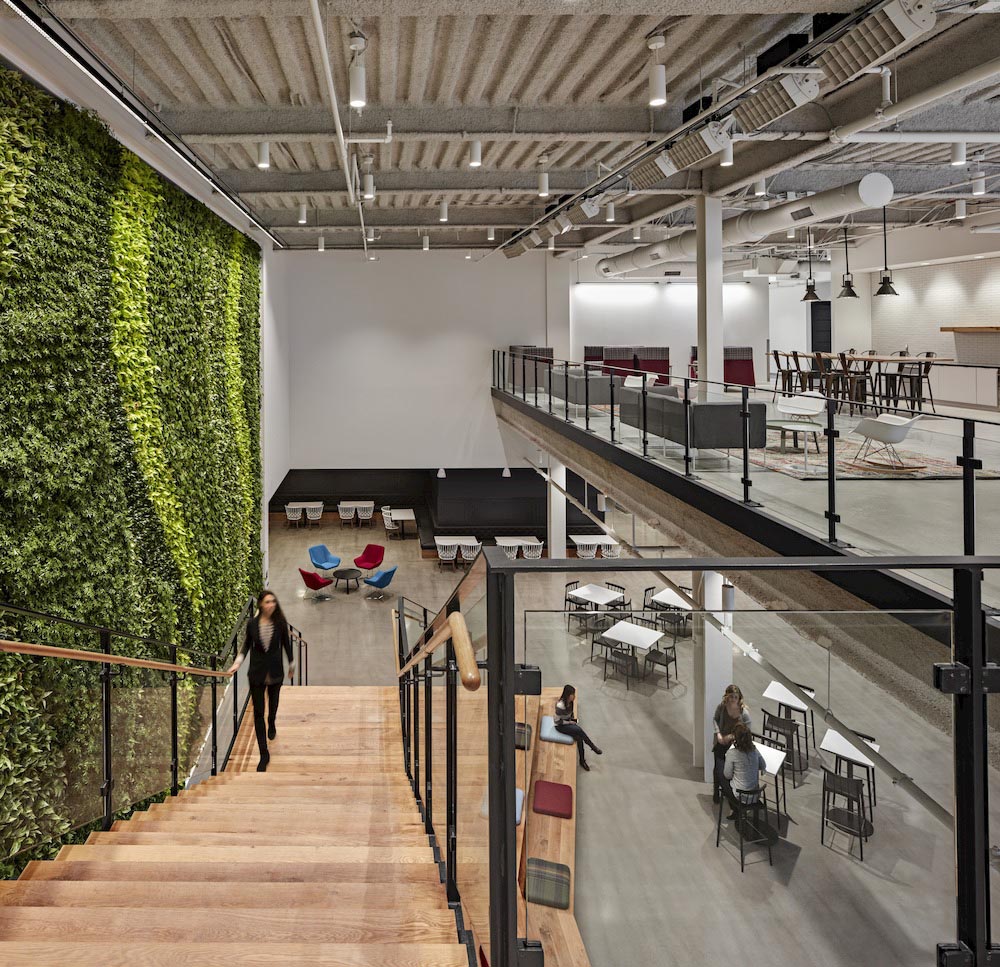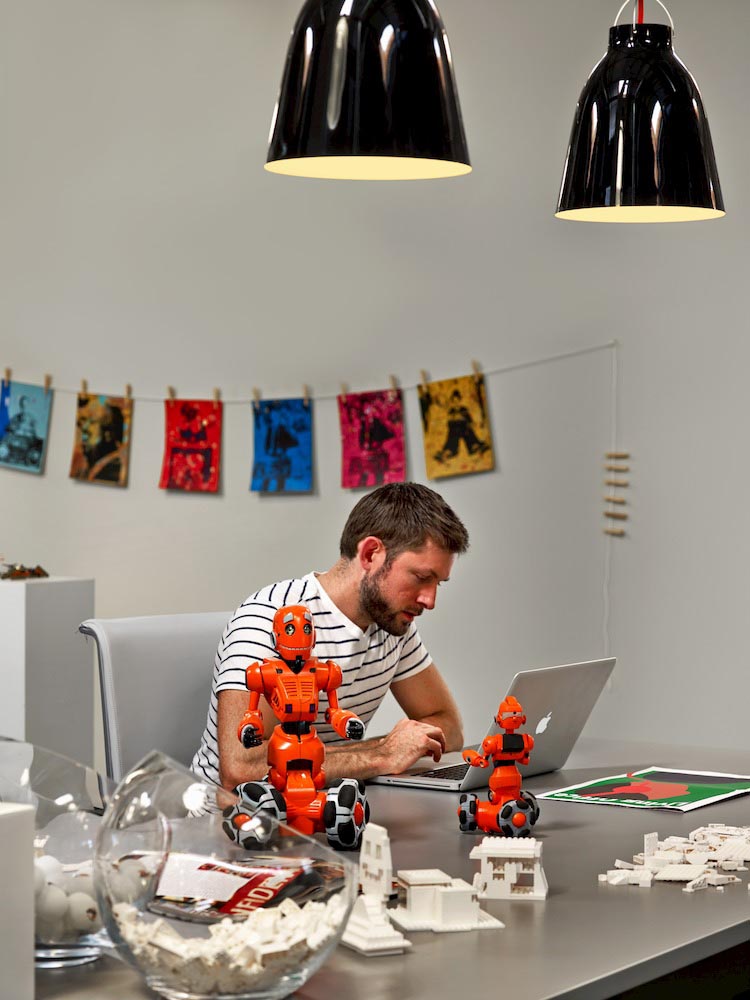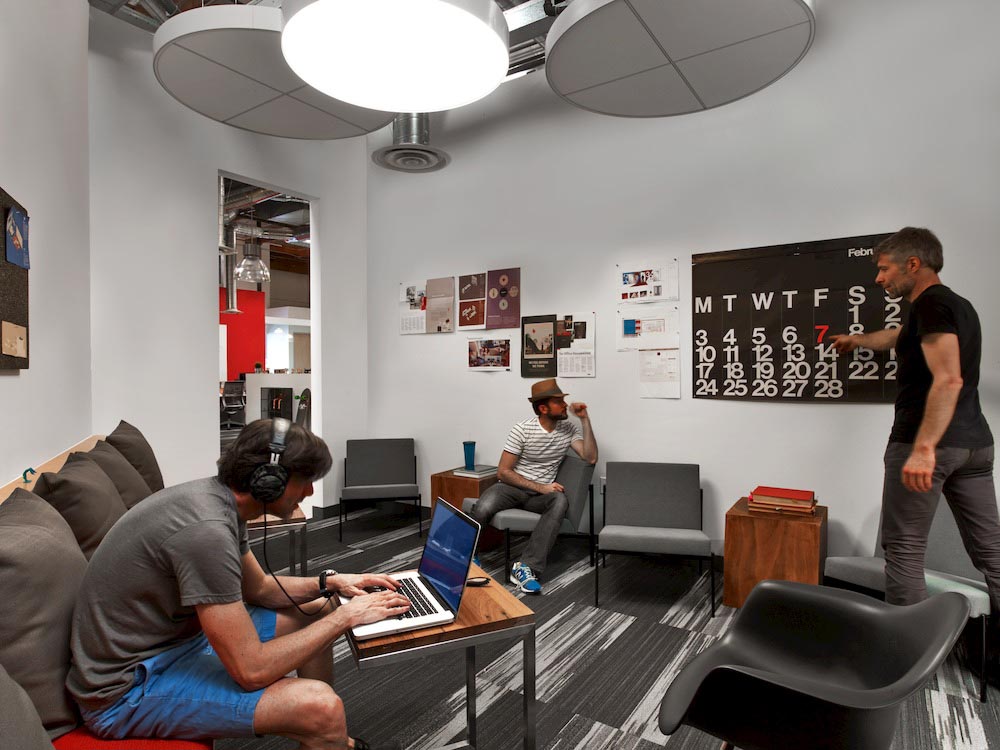
April 12, 2016
The Danger of “Well-Washing”
With so much fervor around “wellness,” is the public at risk of being led astray by well-meaning but naïve practitioners?
Sonos office in Cambridge, MA, designed by IA Interior Architects. Completed earlier this year, the Sonos office includes this multi-story living wall which brings both effective wellness and biophilia concepts to the space.
Courtesy Robert Benson
The following is the first of a series of blog posts by Diane Rogers on designing for wellness.
Designing for wellness seems the right and proper evolution of workplace design—it aligns with our best instincts as architects to create beautiful environments to help people thrive. But just as we observed green-washing as a result of the popularity of sustainable building standards, there is already a tendency on the part of some in the design industry to slap the word “wellness” on their wares, regardless of whether or not they truly promote wellbeing.
Despite our best intentions, our carefully designed lighting plan may be feeding our eyes the wrong intensity and hue of light throughout the day, disrupting our circadian rhythms. The HVAC system we depend on to keep us toasty on a chilly day, if not properly filtered, may be exposing us to more dust mites, molds and mildews than if we were in a naturally ventilated space. That “quiet room” that ended up being placed next to the bathrooms just doesn’t appeal to anyone, given that you can hear each and every time the toilet is flushed.
The reality is that as much as we have grown as an industry, increasing our consciousness around sustainable building practices and environmental standards, we are not there yet. Sometimes our best design insights fall victim to budget cuts and value engineering, because the deeper impact of these design elements hasn’t been quantified until now. Design for wellbeing puts the focus back on where it should be, and where it always has been for designers: what is the user’s experience of the space?
For too long we had no scientific data to explain why it’s worth it to give your workers a spacious, beautiful, daylit space. But now we have the numbers to back us up…We live in an age of constant improvement—our abilities to observe, predict, and affect our minds, bodies, and environment are increasing at breakneck speed. Because of this, we are now privy, through many a scientific study, to watch the effects of what we do to ourselves. We now know we learn better in daylight, we think more creatively in spacious environments, we perform best in a space that is both comforting and engaging for our minds and bodies.
Now is the time for all designers to embrace good design for human beings, and avoid those shortcuts and false promises that we may be asked to make on account of the budget, the schedule, or other outside influences. Join in for future blogs as we explore solutions to these problems, as well as examine what wellness means to us as workers in today’s workplace.
Diane Rogers is a licensed architect, interior designer and WELL Accredited Professional. As the Wellness Leader at IA Interior Architect’s San Francisco office, she brings her passion for wellbeing to bear on a range of high-tech projects.

Sonos office in Cambridge, MA, designed by IA Interior Architects. Beyond connecting the amenity spaces and staff on both floors, the stair also functions as overflow seating/bleachers for company meetings as well as a stage for events. Having a staircase encourages activity within the office.
Courtesy Robert Benson

SapientNitro office in Santa Monica, designed by IA Interior Architects. Having a creative quiet space of your own is an important part of doing “focused work.”
Courtesy Eric Laignel






